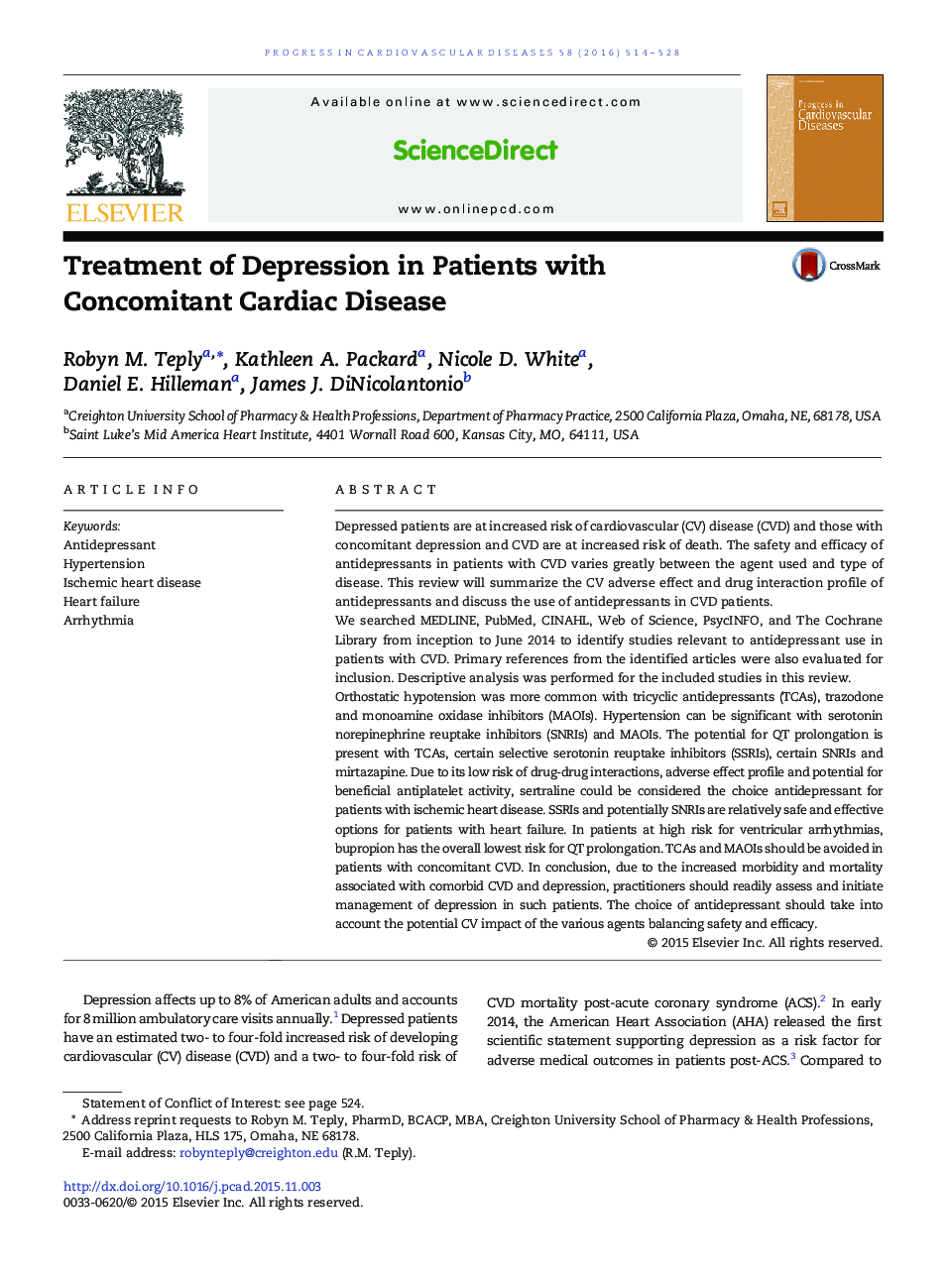| کد مقاله | کد نشریه | سال انتشار | مقاله انگلیسی | نسخه تمام متن |
|---|---|---|---|---|
| 3006211 | 1180969 | 2016 | 15 صفحه PDF | دانلود رایگان |
Depressed patients are at increased risk of cardiovascular (CV) disease (CVD) and those with concomitant depression and CVD are at increased risk of death. The safety and efficacy of antidepressants in patients with CVD varies greatly between the agent used and type of disease. This review will summarize the CV adverse effect and drug interaction profile of antidepressants and discuss the use of antidepressants in CVD patients.We searched MEDLINE, PubMed, CINAHL, Web of Science, PsycINFO, and The Cochrane Library from inception to June 2014 to identify studies relevant to antidepressant use in patients with CVD. Primary references from the identified articles were also evaluated for inclusion. Descriptive analysis was performed for the included studies in this review.Orthostatic hypotension was more common with tricyclic antidepressants (TCAs), trazodone and monoamine oxidase inhibitors (MAOIs). Hypertension can be significant with serotonin norepinephrine reuptake inhibitors (SNRIs) and MAOIs. The potential for QT prolongation is present with TCAs, certain selective serotonin reuptake inhibitors (SSRIs), certain SNRIs and mirtazapine. Due to its low risk of drug-drug interactions, adverse effect profile and potential for beneficial antiplatelet activity, sertraline could be considered the choice antidepressant for patients with ischemic heart disease. SSRIs and potentially SNRIs are relatively safe and effective options for patients with heart failure. In patients at high risk for ventricular arrhythmias, bupropion has the overall lowest risk for QT prolongation. TCAs and MAOIs should be avoided in patients with concomitant CVD. In conclusion, due to the increased morbidity and mortality associated with comorbid CVD and depression, practitioners should readily assess and initiate management of depression in such patients. The choice of antidepressant should take into account the potential CV impact of the various agents balancing safety and efficacy.
Journal: Progress in Cardiovascular Diseases - Volume 58, Issue 5, March–April 2016, Pages 514–528
